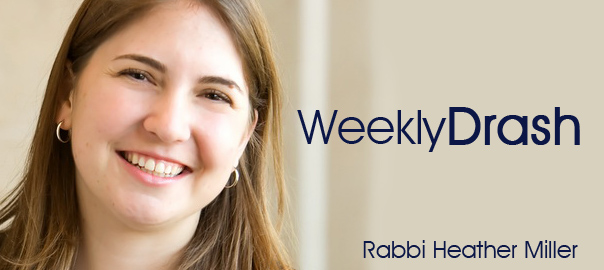Jewish Symbols as Invitations to Tell Our Stories: Parashat Vayeshev

Shabbat Shalom and Happy almost Hanukkah!
So Shabbat is no more a holiday about lighting two candles and eating some bread than Hanukkah is the holiday of the potato pancake, and the jelly doughnut, and the spinning top and the candleabra. At the beginning of Shabbat tonight, we had people come up and dedicate the candle lighting to give it meaning and purpose. And that’s what we do with Jewish ritual. We transform potato pancakes into latkes, doughnuts become sufganyot, spinning tops become dreidls. We make meaning of these symbols and they become more than just fried onions.
But actually it is the other way around– first are the stories and the legends, and then there are the symbols. What do I mean?
Holocaust survivor, Elie Wiesel, shared a story in his book The Gates of the Forest, a legend about the Baal Shem Tov– the founder of hasidism that illustrates the point. When the Baal Shem-Tov saw that the Jewish people was threatened by tragedy, he would go to a particular place in the forest where he lit a fire, recited a particular prayer, and the miracle was accomplished, averting the tragedy. Later, when the Baal Shem Tov’s disciple, the Maggid of Mezrich, had to intervene with heaven for the same reason, he went to the same place in the forest where he told God that while he did not know how to light the fire, he could still recite the prayer, and again, the miracle was accomplished. Later still, Rabbi Moshe Leib of Sasov, in turn a disciple of the Maggid of Mezrich, went into the forest to save his people. “I do not know how to light the fire,” he pleaded with God, “and I do not know the prayer, but I can find the place and this must be sufficient.” Once again, the miracle was accomplished. When it was the turn of Rabbi Israel of Rizhyn, the great-grandson of the Maggid of Mezrich who was named after the Baal Shem Tov, to avert the threat, he sat in his armchair, holding his head in his hands, and said to God: “I am unable to light the fire, I do not know the prayer, and I cannot even find the place in the forest. All I can do is to tell the story. That must be enough.” And, wrote Elie Wiesel, “it was sufficient.”
Telling our stories lights our fires, and allows us to confront the darkness together. We set our Jewish symbols aflame, prideful of our heritage and committed to what they stand for– morality and ethics.
The menorah helps us share our pride. The dreidl helps us tell the story. Afterall it’s sides nun, gimel, hay, shin stand for the phrase nes gadol hayah sham– a great miracle happened there. They symbol invites us to share the story of Hanukkah, so that we can once again this year point to the valor, courage, might, resilience, and principled action of our forebears. Or at least remember that miracles can happen.
Stories invigorate us; motivate us; strengthen us by their wisdom. The great legends of old give us a glimpse of the possibilities of our future.
This week, we read Parashat Vayeshev, theTorah portion about Joseph being sold into slavery by his own brothers! He was in a literal pit. In despair. He was later transferred to prison. In a seemingly impossible situation.
Many people have reached out to me this week expressing this very feeling. And it is no wonder why. World events this week alone—would easily throw us into despair.
This time of the year is also difficult with all of the valorization of harmonious family units, or lovers, gathering in joy. This is exceedingly isolating for those for whom this is not the case.
On top of all of this, this week was the winter solstice, the darkest days of the year surrounded by the darkest week of the year. Plus, it rained! We can easily see ourselves in the experience of Joseph. Nu? What did it take to motivate him? As the saying says, it is “always darkest before the dawn.”
Joseph had the promise of his visions that worked miracles for his situation. From that pit, he rose to the second highest position in the land. What a miracle.
And, indeed, the reminder of miracles that Hanukkah brings transform the seemingly arbitrary act of lighting a menorah to a bold affirmation of possibilities. It is an act of resistance against the darkness. A symbol of hope. And once that first candle is lit, the others are kindled throughout the week. Our defiance against darkness inspires those around us. The symbol of the menorah transforms– it is a physical manifestation of a spiritual value. That is the spirit of Hanukkah. That is why this is the festival of lights. May we each rejoice in each of the symbols of Judaism this Hanukkah season and in the year ahead. Shabbat Shalom! And, Happy Hanukkah!




